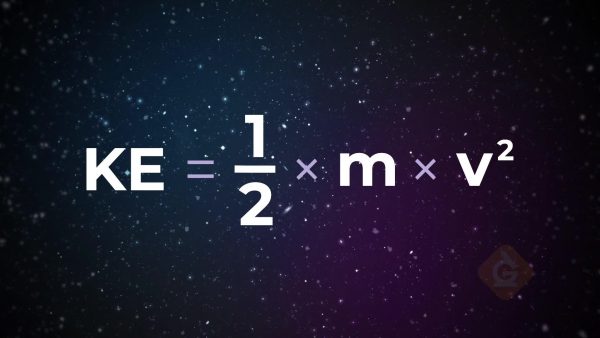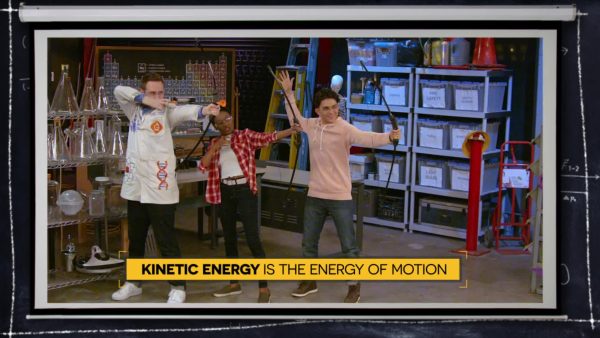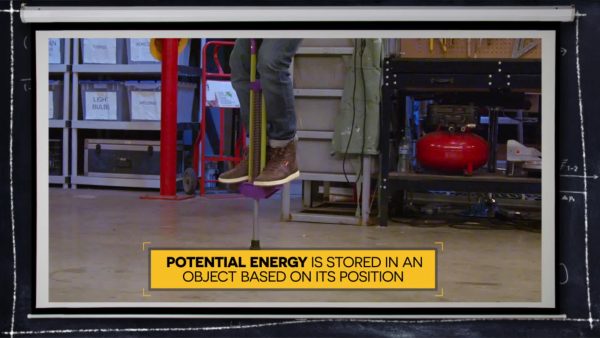Energy makes stuff happen. Energy associated with the motion of an object is called kinetic energy. Energy stored in an object due to its position is called potential energy. Energy can be converted between potential and kinetic based on an object’s motion.
To better understand Potential vs. Kinetic Energy…
LET’S BREAK IT DOWN!
Energy makes stuff happen.

Richard Feynman, one of the greatest physicists of the twentieth century, told his students that, “It is important to realize that, in physics today, we have no knowledge of what energy is. We do not have a picture that energy comes in little blobs of a definite amount. It is not that way. However, there are formulas for calculating some numerical quantity, and when we add it all together it gives … always the same number. It is an abstract thing in that it does not tell us the mechanism or the reasons for the various formulas“(Feynman, Leighton, and Sands 1965, p. 4-2). According to Feynman, it is more important to describe how energy behaves in a system than to define what energy is. One thing we know is that energy makes stuff happen, and we can calculate it very precisely when it does.
Energy associated with the motion of an object is called kinetic energy (KE).

From your youngest age, you probably associated motion with energy. You intuitively knew that the faster something moved, the more energy it must have. A more precise term for energy of motion is kinetic energy. The amount of KE an object has depends upon its mass and its velocity (speed in a given direction). By making many observations over time, scientists determined that the KE of an object is equal to one-half its mass (m) times its velocity (v) squared, and they write the equation as:
KE = ½ × m × v²
The equation shows that KE is directly proportional to the mass of an object (KE ∝ m). As this graph shows, if we double the KE, then we double the mass, or if we halve the KE, then we halve the mass. It also shows that the relationship is linear (directly proportional, straight-line). That’s why wrecking balls are so big and heavy—more KE to destroy stuff!
Look at the relationship between KE and velocity shown in this graph. Again, we see that KE and velocity are directly proportional (KE ∝ v²), but if we increase the KE by a factor of 4, then the velocity of the object doubles (that’s the velocity times itself, not times 2). The graphed relationship is exponential (directly proportional where one of the variables is an exponent, curved line). Think of the damage a railgun can do shooting out a lightweight projectile at six thousand miles per hour without using explosives!
Energy stored in an object due to its position is called potential energy (PE).

Where does the energy come from when an object is in motion? Let’s use a bow and arrow as an example to help us answer this question. You pull the arrow back and the bow bends. When you let go of the arrow, it flies through the air. The arrow got the energy for motion from the bend in the bow. The more you pull the arrow back, the more the bow bends, and the faster the arrow moves. The position of the bow determines how much energy the arrow will have. Energy stored in an object due to its position is called potential energy.
You’ve seen someone pantomime dropping a mic when they do something epic. Does the height from which the microphone is dropped have any effect on the amount of energy it has? Look at these three mics. One was dropped from a height of 1 meter, one from 2 meters, and one from 3 meters. The one dropped from 3 meters is shattered, which is evidence that an object higher from the ground has more potential energy.
Energy can be converted between potential and kinetic based on an object’s motion.

You probably noticed that in each of the examples (wrecking ball, railgun, bow and arrow, and mic drop), potential energy was converted to kinetic energy or kinetic energy was converted to potential energy. The arrow was pulled back (KE to pull; PE based on bend), then released (PE from position to KE as arrow moved through the air). Evidence that the bow and arrow system contained energy was the motion of the bow and the arrow, the sound the bow makes when the arrow is released, the sound the arrow makes as it moves through air and when it hits a target, and the heat your fingers feel on the string of the bow and on the target when the arrow strikes. Just like Feynman said, energy is hard to define, but we have evidence of it based on how the components of the system behave.
Engineers solve a range of problems using their understanding of KE and PE.

Many design problems require an understanding of kinetic and potential energy. How can we design a prosthetic leg so that the wearer can run faster? How can we make football helmets that protect a player’s head/brain when tackled? How can we improve safety features in an automobile that protect passengers during a collision? Mechanical engineers spend their careers solving these kinds of problems by applying their knowledge of kinetic and potential energy.
They are also the people who design the fabulous roller coasters at amusement parks. Their understanding of kinetic and potential energy allows them to make roller coasters thrilling but safe. Using the mass of the cart and how much energy may be lost as sound and heat energy as the cart moves along the track, mechanical engineers can determine how much potential energy the cart needs (how high the hill(s) need to be) to make it around a loop and to the end of the track.
Energy makes stuff happen! By understanding how it behaves in a system, we can explain and predict so many observations of the natural and designed world.
Source of quote: Feynman, R. P., R. B. Leighton, M. Sands, and E. M. Hafner. 1965. The Feynman lectures on physics, vol. 1. American Journal of Physics 33 (9): 750.

































































































































 Select a Google Form
Select a Google Form







 GENERATION GENIUS
GENERATION GENIUS




